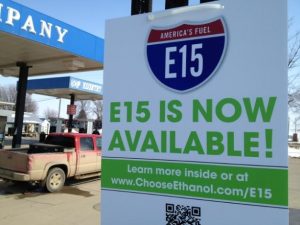 The Trump Administration announcement last week that it will begin rulemaking to allow sales of 15% ethanol year-round generated quite a bit of mainstream media attention. Unfortunately, much of it suggested that the current restriction on summertime E15 sales stems from concerns that the fuel blend could result in “more pollution” and emissions that worsen smog.
The Trump Administration announcement last week that it will begin rulemaking to allow sales of 15% ethanol year-round generated quite a bit of mainstream media attention. Unfortunately, much of it suggested that the current restriction on summertime E15 sales stems from concerns that the fuel blend could result in “more pollution” and emissions that worsen smog.
“In reality, E15 is less volatile than today’s standard E10 gasoline and research has shown that E15 can reduce emissions that contribute to smog formation,” wrote Renewable Fuels Association president and CEO Geoff Cooper in a blog post to set the record straight.
 As the ethanol content in gasoline increases, major exhaust pollutants that contribute to ozone formation generally decrease. A 2018 scientific literature review found all studies show slight benefits or no difference when comparing E15 and E10 tailpipe and permeation emissions. The review concluded that “…organics emitted from the tailpipe will have a lower ozone forming potential with E15 in comparison to E10 for both California-specific fuels and other test fuels in the US and China.”
As the ethanol content in gasoline increases, major exhaust pollutants that contribute to ozone formation generally decrease. A 2018 scientific literature review found all studies show slight benefits or no difference when comparing E15 and E10 tailpipe and permeation emissions. The review concluded that “…organics emitted from the tailpipe will have a lower ozone forming potential with E15 in comparison to E10 for both California-specific fuels and other test fuels in the US and China.”
“The real reason retailers in conventional gasoline areas have been unable to sell E15 in the summertime is quite simple: bureaucratic red tape and outdated regulations,” said Cooper. “EPA developed regulations governing the volatility limits for E10 gasoline nearly 30 years ago. At that time, the Agency did not contemplate that blends containing more than 10% ethanol may one day be prevalent in the marketplace; thus, EPA did not include the same volatility limits for E15 or other higher blends that it provided for E10.”

